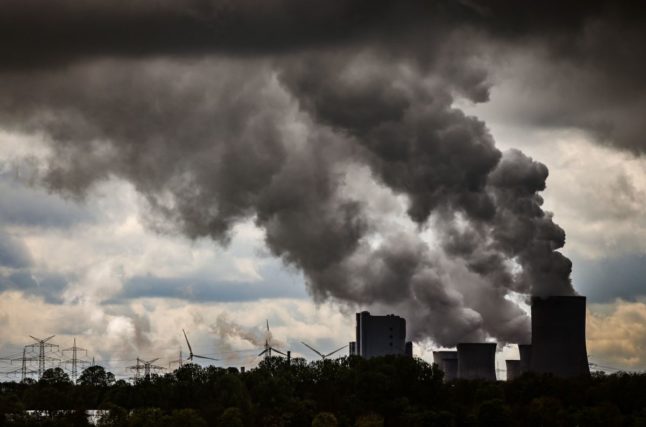Alerts have been issued over the heat which is likely to last until the end of the week.
On Monday, temperatures up to 33C were expected in some areas of western Germany, including North-Rhine Westphalia, while in the east, the mercury was due to reach the late 20s.
Hitze auf dem Vormarsch!
Stramme Südwestströmung in der Höhe führt heiße Luft aus Nordwestafrika nach Mittel- und Westeuropa. Bis mindestens Sonntag verbreitet 30 bis 39 Grad und eine hohe bis sehr hohe Wärmebelastung. Lokal sind 40 Grad nicht völlig ausgeschlossen. /V pic.twitter.com/cJV6nJZ0BH— DWD (@DWD_presse) June 23, 2019
These graphics by the DWD show how the hot air will spread throughout Germany from Monday to Wednesday.
According to the German Weather Service (DWD), it will get progressively warmer, with the highest temperatures arriving mid-week.
READ ALSO: Eight signs summer has arrived in Germany
The heat is due to a weather front bringing warm air from Africa to central Europe.
 Emma and Lotta, both two-years-old, eat ice lollies in Mülheim, North-Rhine Westphalia on Sunday. Photo: DPA
Emma and Lotta, both two-years-old, eat ice lollies in Mülheim, North-Rhine Westphalia on Sunday. Photo: DPA
“The sun is able to shine almost uninterrupted, with a lot of warm air coming to us from Africa,” said meteorologist Sabine Krüger from the DWD.
Experts warn of risks
On Tuesday the mercury will likely top 36C in areas like the Upper Rhine region, which includes parts of Baden-Württemberg, Rhineland-Palatinate and Hesse.
Wednesday will be even hotter, especially in the Rhine-Main area of western and central Germany. In the capital Berlin, highs of 37C are expected. In Düsseldorf, it will likely hit the 35C mark.
However, it “will reach 39C and, in some places, even the 40C mark could be cracked,” Krüger said. These temperatures are expected in places like Frankfurt in Hesse.
In fact, Wednesday will likely be the warmest day of the year so far, with a new record for June possible. The current record is 38.2C, which was recorded in 1947 in Frankfurt.
In view of the extreme temperatures, experts have warned people to take care and try and stay out of the hot sun.
In temperatures above 37C, the risks of heat stroke, exhaustion or circulatory failure become much higher. Senior citizens, babies, and people who are ill are particularly at risk.
Forecasters said the danger of summer storms, which have been lashing the country recently, is low this week because the air is very dry.
 Residents in Wiesbaden enjoy the hot temperatures. Photo: DPA
Residents in Wiesbaden enjoy the hot temperatures. Photo: DPA
Storms at the weekend
It comes after storms with heavy rain caused huge problems in parts of Bavaria at the weekend. Cellars and streets became flooded due to torrential rain. In the Schwaben-Nord area in Augsburg, rescue teams were called out 195 times, a police spokesman said.
In the Munich district, the fire brigade were called out 50 times to help pump out cellars and clear roads of water.
IN PICTURES: Giant hailstones hit Munich as storms continue in Germany
Operations at Munich Airport were suspended for more than an hour on Saturday evening, with a total of 23 flights cancelled, said a spokeswoman for the airport.
Organizers had to end a music festival in Munich early due to the weather, DPA reported.
Western Switzerland and parts of Italy were also hit by storms, and dozens of people were injured in hail showers.




 Please whitelist us to continue reading.
Please whitelist us to continue reading.
Member comments